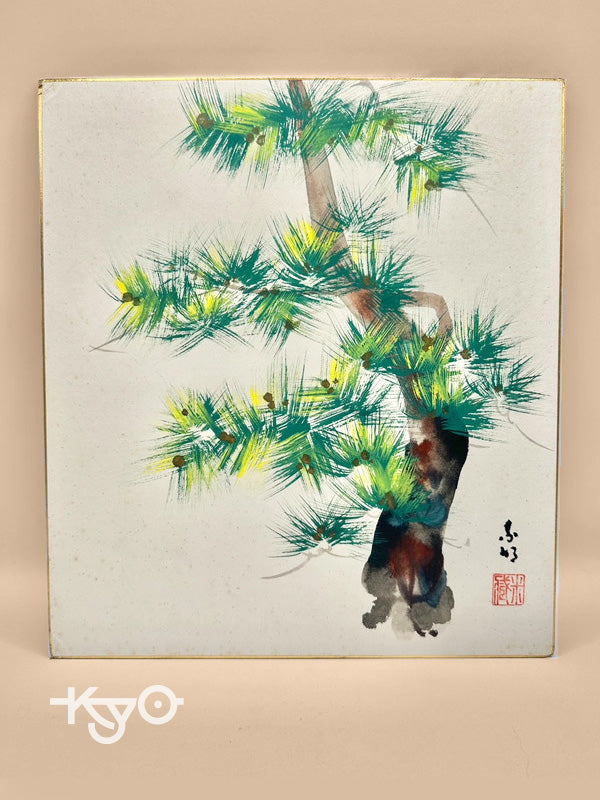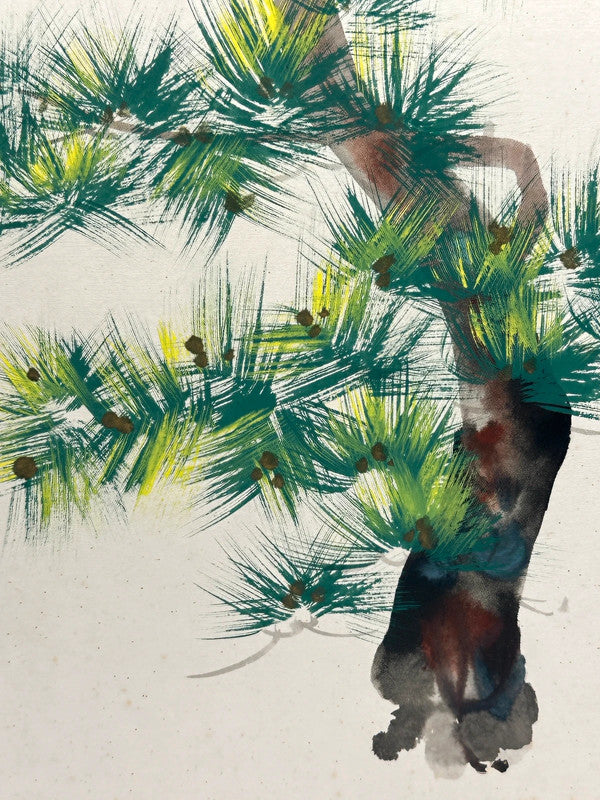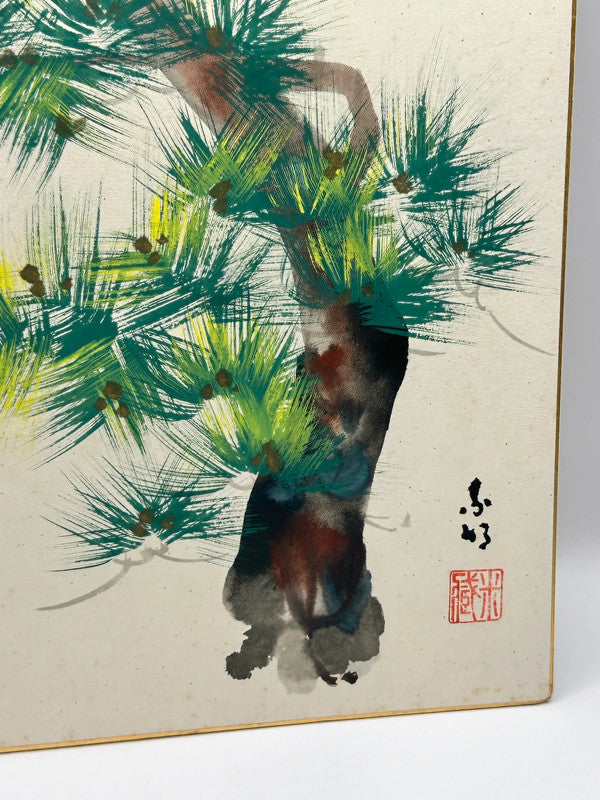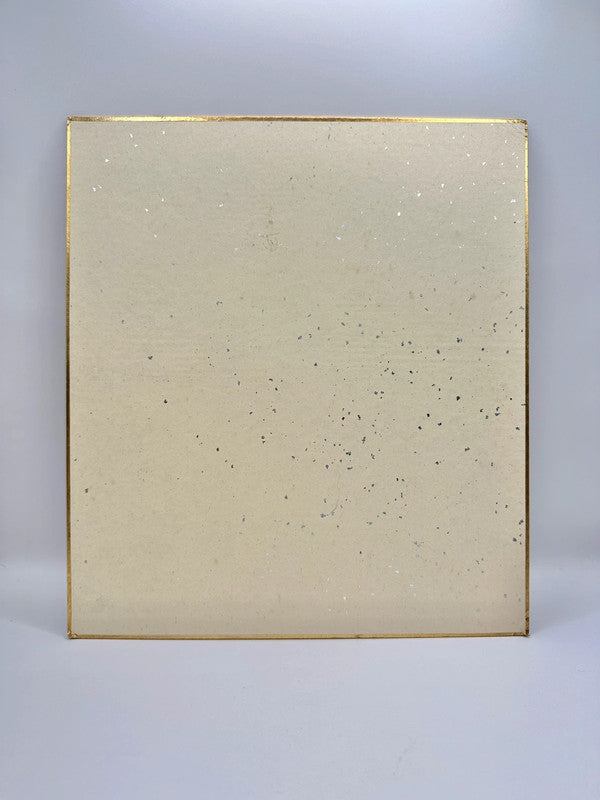SHP14 - Original Shikishi artwork card Japan
SHP14 - Original Shikishi artwork card Japan
Pine tree (松, matsu) holds deep symbolic significance, representing longevity, endurance, and resilience. The symbolism comes from the tree’s long lifespan and its ability to thrive in harsh conditions.
1. Longevity and Immortality
Pine trees are among the longest-living trees in Japan, and their enduring nature has made them symbols of longevity and immortality. They are often associated with wishes for long life and good health, and they feature prominently in celebrations and rituals that focus on these themes, such as New Year’s.
2. Good Fortune and Prosperity
Pine trees, along with bamboo and plum trees, are considered part of the “Three Friends of Winter” (冬の三友, fuyu no sanyū). These trees retain their green leaves through winter, symbolizing resilience and the promise of prosperity. They are often used in New Year’s decorations, where they are believed to bring good fortune.
3. Spiritual and Sacred Symbolism
In Shinto, the pine tree is regarded as a sacred symbol, often associated with the presence of kami (spirits or gods). Sacred pine trees are found at many Shinto shrines, and some shrines even have a torii gate made from pine trees. The tree is considered a “gateway” to the spiritual realm.
4. Seasonal Symbolism
Pine trees also play an important role in the Japanese aesthetic of the changing seasons. In winter, their evergreen needles stand in contrast to the barren landscapes, symbolizing the beauty and resilience of nature during cold months.
5. Symbol of Protection
Pine trees have also been used in traditional Japanese gardens and temples as a form of protection. The “pine tree fence” (matsu no kabe) often appears in gardens, symbolizing defense against evil spirits and bad fortune.
Size: 24 x 27cm
Share








